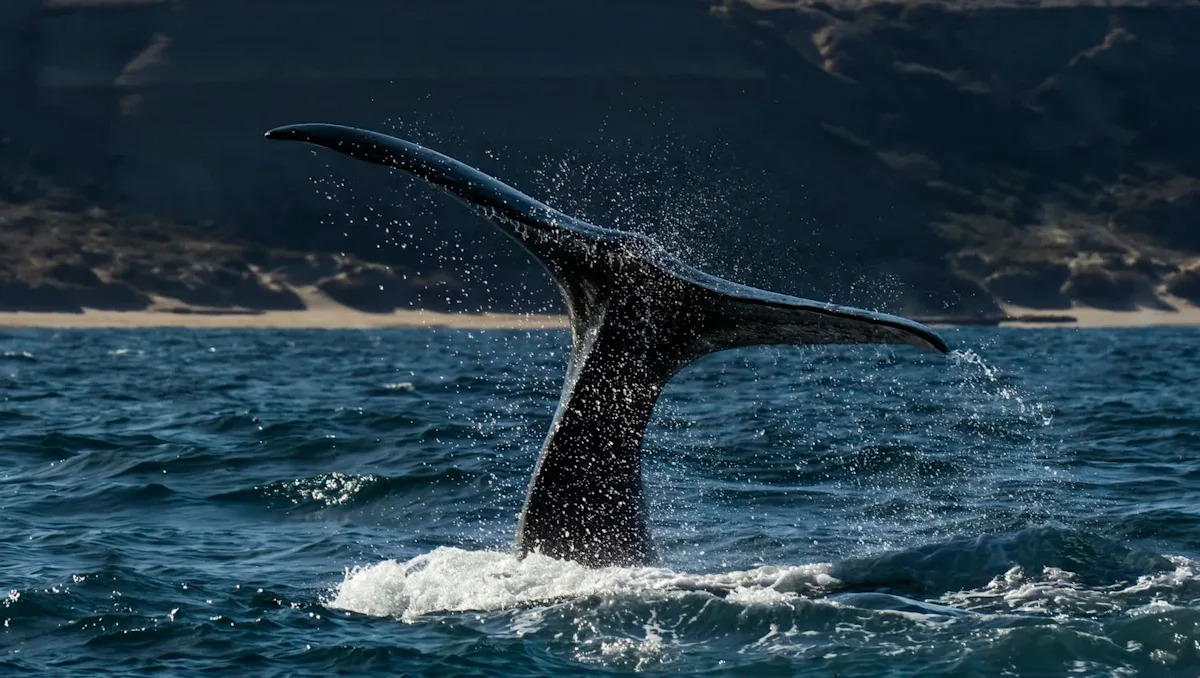A scientist has observed the declining birth rate of southern right whales off the coast of South Africa. Not only is this concerning for the species, but it also indicates widespread disruption to the ocean’s health.
What’s happening?
Researcher Matthew Germishuizen, while studying southern right whales off South Africa’s coast, discovered a worrying trend: The whales are giving birth to fewer calves than in previous decades. According to an article by Germishuizen published in The Conversation, it’s a signal that whales are struggling to adapt to rapidly changing ocean conditions.
Germishuizen found that female southern right whales, while their populations are recovering from centuries of whaling, are now showing signs of malnourishment and reproductive slowdown. Historically, mother whales have had calves every three years. But since 2009, that’s stretched to four or five years, a sign that it’s taking them longer to find enough food for healthy reproduction.
Satellite tracking and decades of survey data point to one major factor: Warming Antarctic Ocean waters are reducing sea ice and krill populations, the tiny crustaceans whales depend on for survival.
Why is this declining whale birth rate concerning?
Southern right whales are considered a barometer of ocean health, and their struggles are a red flag for a broader ecological crisis. The species relies on rich Antarctic feeding grounds, but sea ice in key regions has declined by 15% to 30%, shrinking the habitats krill need to reproduce. As a result, whale mothers must travel farther and expend more energy to find food, often arriving at breeding grounds in poorer condition.
This disruption doesn’t just threaten whales. The Antarctic Ocean plays a critical role in regulating global temperatures by absorbing heat and carbon dioxide. As that balance shifts, ripple effects could impact fisheries, weather patterns, and food security.
If this downward trend continues, whale populations could fall again after decades of recovery. This would be a big setback for marine conservation and for communities that depend on eco-tourism tied to South African whale watching.
What can we do about it?
Researchers are already using satellite tags, genetic studies, and long-term monitoring programs to better understand how whales are adapting to the changing climate. Conservation groups like the Dyer Island Conservation Trust and Whale Coast Conservation are raising awareness and calling for stronger protections for marine habitats. In the long run, efforts to reduce planet-heating pollution are essential, since it’s a primary driver of the changing climate.
People can help protect marine environments by supporting sustainable seafood, transitioning to clean energy, and backing policies that preserve marine biodiversity. As Germishuizen wrote: “Protecting whales and the oceans they depend on is inseparable from protecting our own future.”
Join our free newsletter for good news and useful tips, and don’t miss this cool list of easy ways to help yourself while helping the planet.
